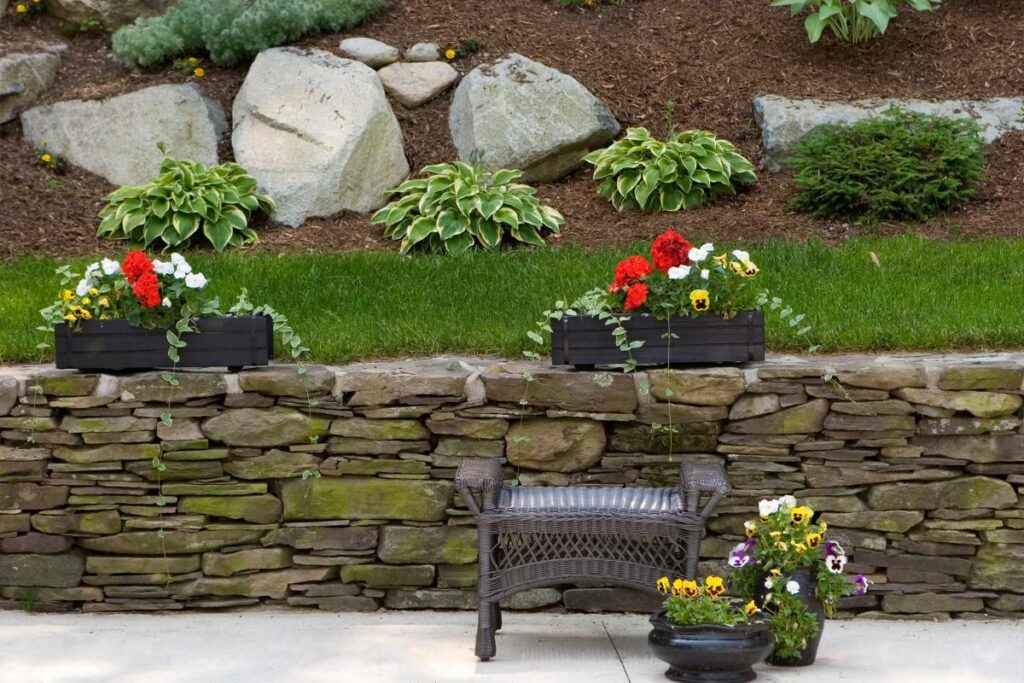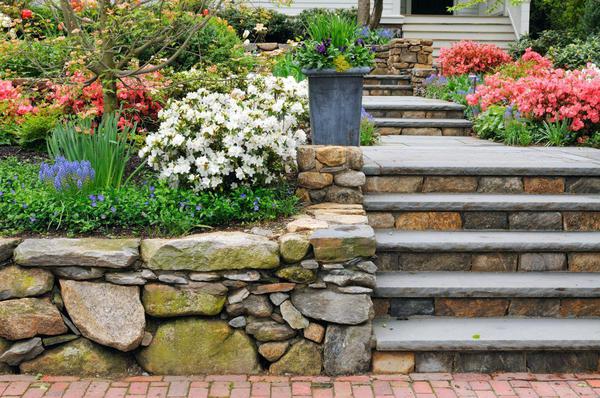A dry wall in the garden

Dry walls are, simply said, composed of stones, which are neither joined with any binder, nor have any foundations. Clay and sand slurry can be the only binder. Dry walls can even form the fencing of the plot, an elevated flower bed, but more often they line paths and solve height differences on the grounds.
The more carefully we select and lay the stones of the dry wall, the better it will look and the longer it will last. Certainly, to make a kind of rampart by piling up the stones is another solution. In that case gabions look best as the stones are kept together in a regular geometric shape by wire mesh. With dry walls, we do not have to use any binder, or, if needed, a mixture of sandy loam soil.

It is necessary to use a kind of stone that is typical of a given area or, at least, of other building elements of the house and garden. For a dry wall, it is really convenient to use weather-resistant stones, especially granite, sandstone, limestone, slate and phonolite. Naturally, every wall can look different not only due to the choice of a type of stone, its size and format, but also due to its location and purpose of use.

For the construction of a dry wall, it is ideal to use stones of different sizes, preferably flat, or squares or higher blocks. However, the magic is also in irregularity, and for example, flattish boulders can also be used to make splendour. The better the stones fit together, the less they require a binder without cement and lime, i.e. the above-mentioned clay-sand slurry. If we want to plant plants in the interstices, it is appropriate to add compost or peat into this slurry.

To make a dry wall stable, it is advisable to dig out approximately 30 cm (even 15 cm is enough) of soil, fill the space with gravel and settle the first layer of stones into it. Furthermore, this gravel layer will act as drainage. Since the pressure affects not only the base, but also the sides, it is necessary to use the largest stones for the sides of the wall. We use rather high and long stones to construct the lower layer and rather small stones for the upper part of the wall. At the very top it is ideal to use flat and wide stones which will strengthen the wall. However, it always depends on the material used.

The front side of a wall should recede at least slightly backwards, i.e. it should have a slight slope, which corresponds to the method of laying the stones. The wall is thus more stable and, in addition, water flows into the joints during rains, which provides the plants in the joints with irrigation and prevents the soil used as a binder to be washed out at the same time.

We can plant alpines, perennials, tufted grasses and rather dry-loving ferns in the gaps of a dry wall. Of course, there is also a place for mosses and lichens, but we may not succeed in specific cases, depending on the area and position on the plot. When choosing plants, it is advisable to consult an expert, otherwise we will experiment over and over again.

Just for basic orientation – houseleek (sempervivum) carrying rich water supplies, stonecrops, rockfoils, aurinias and aubrietas, bells, phloxes and yarns are suitable for dry walls in sunny locations. We choose ferns, spleenworts, polypody and rustybacks for partial shade and shade. Succulents, tufty grasses, thyme or bugleweed are suitable on the upper side of the walls. We can also let the face of the wall grow with ivy or false flax. But beware of the possibility of damage to the wall or its complete shading, then there is no choice but to fight with the spreading beauty so that the stones can be seen. It is also possible to use rockfoil or corydalis. Plants with long and rich roots should be already planted during the construction of the wall as it is simply impossible to succeed later.



Source: www.ceskestavby.cz
